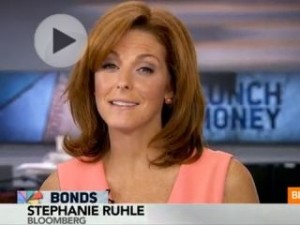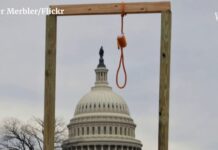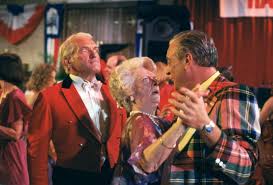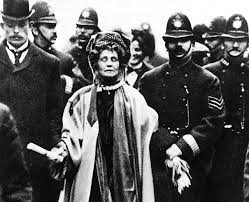People don’t need advice on how to watch TV. After all, TV is designed to entertain and inform, and sometimes, in the burred world of modern journalism, those two goals are intertwined.
That’s why MSNBC poses an interesting journalistic case. The network seeks to present high-level, informed opinions from panels of experts moderated by skilled anchors who can guide the discussion and supplement it with their expert facts. At least, that is the theory.
However, the network’s current format falls short of those goals for anyone who has watched it over the years. It does not consistently present expert opinions, and when experts are on the show, they are mixed in with panels of less-informed guests, or they do not get more than five minutes (a lifetime in TV time) to present their facts and informed opinions.
This is why viewers don’t have to feel they are missing out on the news or on being well-informed if they spend more than 30 minutes a day watching the network. You can watch your favorite on-air personality for the entire hour their show is on the air, but if you watch longer than that, you get the feeling that it is Groundhog Day at MSNBC.
Instead, MSNBC relies on a very tired format of tired panelists (most often the usual suspects), who could not get any more information on the topic under discussion since they were guests on the same network just hours before. In short, these tired panelists act as placeholders for the camera, just as a stand-in for a Hollywood star on a movie set when it’s time to adjust the set and camera angles. Worse, these panelists look like they have just answered the same question posed to them an hour before. And commonly, that is exactly what happened.
But MSNBC is a hybrid news-opinion network. Its segments are one hour long and face significant problems due to the network’s limited topic coverage and political orientation format. Its coverage starts in Washington and then predictably goes down to the local level to provide some color or gauge the regional impact. That is standard top-down national news coverage.
MSNBC’s Faulty Format
The problem is that MSNBC’s daily focus on news doesn’t vary much. It’s all Washington all the time unless an event demands a longer time frame, such as an election, epidemic, or war. In these cases, the longer-breaking event often dominates the entire broadcast day. This means it fits the network’s format, but it is tedious to viewers unless they are obsessed with the event or the network presents breaking news. In case MSNBC viewers forget, a real news show has an anchor. Then, reporters post different stories from various locations nationwide with new, original footage and edit them into a standalone segment. The report’s length depends on how important the story is considered by its editors.
In the golden days of pre-cable broadcasting, the 30-minute, prime-time (dinner hour in the old days) Walter Cronkite news show presented individual news reports that were essentially taken from the front page of the New York Times. The Vietnam War and Watergate emerged as historic national stories, so they naturally got more air time. However, on average news days, the Cronkite broadcast was an overview of national news, often ending with a lighter, more comical, short closing story.
But those were the old days. Cable broadcasting today is cheap. It does not pay for many local newsgathering crews, and film or tape editing is required to support the story. Video editing expenses today are at a minimum. This is why we see loop tapes on MSNBC and CNN, for instance, of the same canned video in a 60-second report that doesn’t have a live reporter in an on-camera report.
As a result, MSNBC’s format is mostly done from the studio. It is not the news shows seen on CNN, PBS, the BBC, and even, to a lesser degree, FOX. News shows that present a variety of daily news items within a 30-—or 60-minute time slot are uncommon today at the national level, but they thankfully exist at the local network level.
MSNBC’s Conservative Politics
MSNBC’s other deficiency is that it positioned itself as an alternative to the right-wing FOX network. The problem was that its political identity remained foggy. It is not a liberal Democrat, nor was it ever a Progressive Democrat. Just ask Ed Schultz, the most liberal and working-class of its on-air personalities, who was dismissed in 2015 when MSNBC launched its new, undefined spot on the political spectrum and wanted to move to the political right. Schultz was too liberal to fit into the new mold.
Today, MSNBC is hard to define politically. It is anti-Trump, and that has helped it attract millions of viewers. But it is also anti-Sanders and progressive, as evidenced by comments from Chris Mathews and Chuck Todd. It also has more than its share of former Republicans on-air (Morning Joe Scarborough and Nicole Wallace, White).

House Communications Director under George W. Bush and campaign advisor for Sarah Palin). A regular guest is Michael Steel, the former chairman of the Republican Party. It also has some vehement free-market defenders, such as Stephanie Ruhle, a former derivatives salesperson for central global banks. If anything, the network is conservative Democrat, a risky place to be when the country is leaning left skewed to younger viewers.
So, will you get most of the news you need from MSNBC? Probably not. If your time is valuable or you don’t want to be bored, watching MSNBC for less than an hour a day is more than enough. You won’t get a full spectrum of daily national news or political opinions, but it is fact-based, more than FOX. The network will also be worthwhile during the election, but in more normal times, MSNBC’s limited and tired broadcast format has to be revitalized to be interesting for more than an hour a day.











